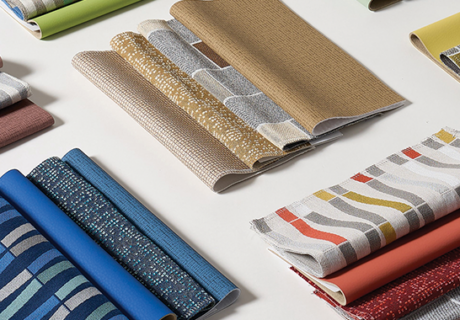Take 5 With TVS’ Niada Parker

Headshot credit: Niada Parker / TVS
In this series, Healthcare Design asks leading healthcare design professionals, firms, and owners to tell us what has their attention and share their ideas on the subject.
Niada Parker is associate principal, director of healthcare at architecture, interior design, and planning firm TVS (Atlanta).
Here, she shares the top five trends and issues getting her attention right now, including the demand for airborne isolation rooms, modular design, and behavioral health care spaces.
- Isolation rooms
During the COVID-19 pandemic, many facilities struggled with how to transition existing spaces to airborne- and contact-isolation rooms. Today, facilities are responding with whole-building strategies that give more thought to specific HVAC needs, from independent exhaust to stacking patient rooms. Isolation rooms should also provide some flexibility for a range of healthcare services so that patients don’t have to be moved from one room to another.
TVS recently collaborated with Level 1 trauma center Grady Memorial Hospital in Atlanta on an emergency flood remediation project, in which we outfitted all the isolation rooms with dialysis hookups. It wasn’t a simple fix, as moving patients to another unit for this treatment was risky and could potentially lead to destabilization and negatively impact other parts of their health. The adaptation provided greater flexibility and made patient care more seamless.
- Modular design
Flexible, modular design configurations continue to gain in popularity, driven by the many benefits of reconfigurable systems, including a reduction in the amount of waste, dust, and debris generated by built-ins as well as quality assurance.
Prefabricated doors, demountable walls, and modular casework help reduce the amount of construction waste produced up front, plus they are inherently easier to reconfigure for future flexibility and moveability. From a quality perspective, modular builds are typically factory-grade, meaning there’s consistency in fabrication and quality due to the sheer repetition of production.
Wall-hung, factory-designed modular casework allows for easy removal and prevents the costly disruption of patient and treatment rooms. Modular partitions, doors, and assemblies allow for easier reconfiguration as census needs or department layouts change. Storage units, sinks, and other furniture solutions that have easy-to-clean surfaces and allow for quick configuration are also being implemented.
- Sustainable solutions
Hospitals are, by nature, some of the biggest users of energy and resources. Today, there’s a movement to identify simple changes that will help reduce healthcare organizations’ carbon footprints. These strategies include systems to help reduce surgical waste and the use of toxic chemicals, as well as renewable energy sources such as solar panels and water reuse solutions.
Healthcare facilities are increasingly making the move toward LED lighting. Data analyzing new lighting design from cove.tool showed that changing to LED lighting can yield a 30 percent power usage reduction for many renovation projects, in addition to reducing replacement and routine maintenance costs. TVS’ standard protocol per the American Institute of Architects 2030 Commitment sustainability challenge is to conduct a lighting study, enter the calculations into cove.tool, and analyze for potential saving and reduction opportunities.
- Behavioral health
Health systems are grappling with the growing behavioral health crisis, especially among young people. A lack of inpatient and outpatient facilities, coupled with a shortage of qualified physicians and staff, is straining providers’ ability to effectively treat and manage the many different types of mental health issues.
Providers are responding by retrofitting existing spaces or building new behavioral health facilities that are accessible, convenient, and designed with the necessary safety features for patients and providers. Providing quick access to those in need in a non-institutional setting is key.
Grady Memorial Hospital has taken steps in this arena, as well, with a new 16-bed medical/psych unit to support the growing community need for concurrent treatment. This facility opened in October 2023 and provides adequate space for diagnostics, treatment, therapy, education, and peer support services.
- Using technology to enhance patient care
Incorporating new technologies that enhance the patient experience is another ever-changing aspect for designers today. A more seamless patient and staff experience has been a priority, evidenced by the rising popularity of interactive patient televisions and digital whiteboards that help to organize information and entertainment all in one place.
Much of the technology that personalizes the bedside experience and streamlines workflows is either still being tested or is rolling out slowly, in order to address some of the challenges surrounding technology upgrades. These issues include increased upfront costs, need to reduce the amounts of conduits and data ports, and adequate training for hospital staff to use the new interfaces and service them in the event of a glitch.
Niada Parker is associate principal, director of healthcare, at TVS (Atlanta) and can be reached at nparker@tvsdesign.com.
Want to share your Top 5? Contact Managing Editor Tracey Walker at tracey.walker@emeraldx.com for submission instructions.


